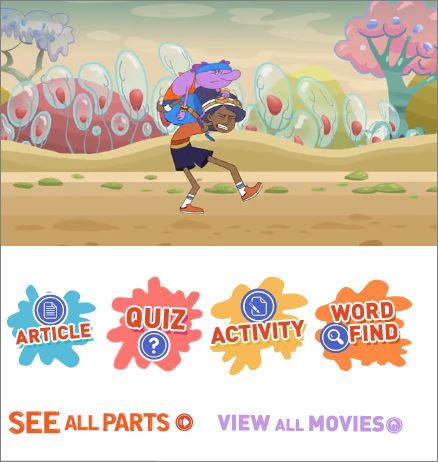I was thrilled to get a chance to review Exploring Creation with Human Anatomy and Physiology from Apologia and can't wait to tell you about this wonderful curriculum.
What is Exploring Creation with Human Anatomy and Physiology from Apologia?
I received a nice set of:
Exploring Creation with Human Anatomy and Physiology Text
Exploring Creation with Human Anatomy and Physiology Junior Notebooking Journal (for early writers K-2nd or 3rd)
Exploring Creation with Human Anatomy and Physiology Notebooking Journal (for Grades 3-4+)
Exploring Creation with Human Anatomy and Physiology MP3 Audio CD


Exploring Creation with Human Anatomy and Physiology Text
Exploring Creation with Human Anatomy and Physiology Junior Notebooking Journal (for early writers K-2nd or 3rd)
Exploring Creation with Human Anatomy and Physiology Notebooking Journal (for Grades 3-4+)
Exploring Creation with Human Anatomy and Physiology MP3 Audio CD
Exploring Creation with Human Anatomy and Physiology Text is the meat of the curriculum and is intended to be used with elementary aged students.
Junior Notebooking Journal and Notebooking Journal - I received two levels of the notebooking journal. The Junior Notebooking Journal is intended to be used with early writers or students in Kindergarten through 2nd or 3rd grade (Sometimes that third grader is on the verge and not quite ready to plunge forward so this would be perfect for them.)
The other Notebooking Journal is intended for students in Grades 3 through 4, or above.
The other Notebooking Journal is intended for students in Grades 3 through 4, or above.
There are a few differences in the levels with the main differences being that in the older journal has crossword puzzles and longer scriptures on the copy work pages while the junior level has more coloring pages and shorter scriptures for copy work. Both journals seem to have the same full-color build-a-skeleton Personal person transparency overlays and cut-out mini books and such at the end.

The text contains 14 lessons. The suggested daily schedule lays out four to seven assignments per lesson. If you do two daily assignments a week, the course will take a full year to complete.
Included in the lessons are:
Lesson 1 - Introduction to Anatomy and Physiology
Lesson 2 - The Skeletal System
Lesson 3 - The Muscular System
Lesson 4 - The Digestive and Renal Systems
Lesson 5 - Health and Nutrition
Lesson 6 - The Respiratory System
Lesson 7 - Life in the Blood
Lesson 8 - The Cardiovascular System
Lesson 9 - The Nervous and Endocrine Systems
Lesson 10 - The Nervous System Extended
Lesson 11 - Your Senses
Lesson 12 - The Integumentary System
Lesson 13 - The Lymphatic and Immune System
Lesson 14 - Growth and Development
The lessons contain information about the topic being learned with hands-on activities interspersed throughout as a Try This section, and then each lesson ends with an experiment or a project. All of the necessary items to conduct the experiments or to complete the projects are listed toward the front of the book.
At the end of each lesson, there are notebooking assignments that correspond to what you have just learned within the lesson you are studying.These consist of written exercises, illustrating concepts and other hands-on activities.
There is also a Personal Person activity in the notebooks. This is a fun hands-on activity where the student basically builds a person out of paper and transparencies with pictures of organs that overlay each other.
The course also contains some book extras on their website when you use a special code that is provided in the book. I'm really glad I discovered this portion of the book as there are some really useful extras included, like this little video in the lungs lesson that also had a quiz and an activity sheet about lungs, but there is so much more to explore as well.
I presented this to my youngest as she is currently finishing up another one of Apologia's science courses. While she is toward the end of her elementary years, she actually surprised me that she chose the notebook journal for the older student rather than the younger version. The reason it surprised me is that she absolutely loves to color and do hands-on projects, so I really expected her to choose the Junior version of the notebook journal. But, her reasoning is that the crossword puzzles in the book for older students sounded like fun.
What Did We Think?
I am a huge fan of Apologia, and this course kept up right in line with my high hopes and opinions of the publisher so as to not disappoint. I love how the studies point back to God, and I absolutely love that they include hands-on journals in addition to the in-book experiments.
Facebook: www.facebook.com/apologiaworld Tag: @apologiaworld
Twitter: www.twitter.com/apologiaworld Tag: @apologiaworld
Pinterest: https://www.pinterest.com/apologia/ Tag: @apologia
Instagram: www.instagram.com/apologiaworld Tag: @apologiaworld
Google+: https://plus.google.com/105053356034237782125
YouTube: https://www.youtube.com/user/apologiaworld
FIND Apologia ON SOCIAL MEDIA @:
Facebook: www.facebook.com/apologiaworld Tag: @apologiaworld
Twitter: www.twitter.com/apologiaworld Tag: @apologiaworld
Pinterest: https://www.pinterest.com/apologia/ Tag: @apologia
Instagram: www.instagram.com/apologiaworld Tag: @apologiaworld
Google+: https://plus.google.com/105053356034237782125
YouTube: https://www.youtube.com/user/apologiaworld
Read what other members of the Homeschool Review Crew thought by clicking on the picture below:













No comments:
Post a Comment